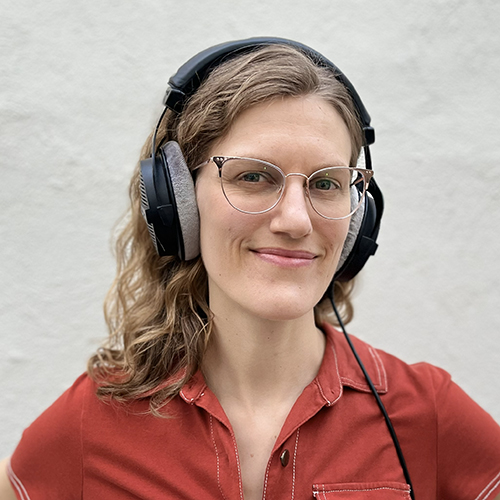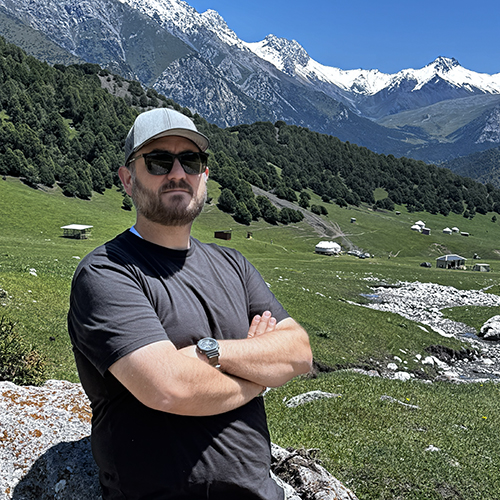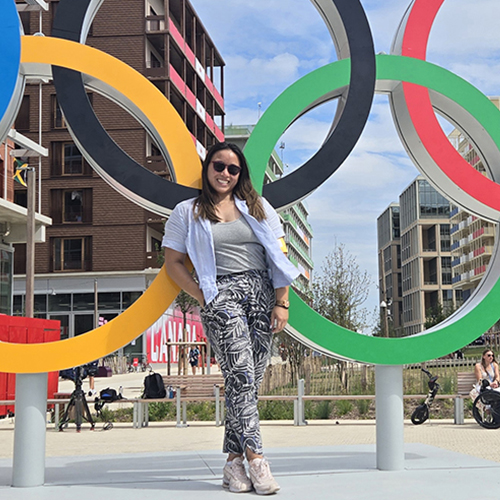Jennifer Nemhauser leads a research laboratory of scientists, all immersed in the complex world of plant hormones. But last year, the UW professor of biology boosted her lab’s roster with some unexpected talent. Claire Cowie — an artist, UW alumna and lecturer — spent three months as a part-time artist in residence in Nemhauser’s lab.
“This was such an insightful and creative experience,” says Cowie, who earned a graduate degree in printmaking from UW and has taught at the University since 1999. “I hope that by sharing this story and describing the residency program, we can inspire other collaborations between scientists and artists.”
By her own admission, Nemhauser wanted to host an artist in the lab “for years.” She was motivated in part by a long-standing desire for new and creative ways to move science out of the lab and into the public sphere.

“I feel strongly that scientists, as public servants, must engage with the community in meaningful ways,” says Nemhauser. “And many artists are already operating in the public sphere. Art and design have tremendous influence on how we communicate ideas.”
Nemhauser also feels that scientists could benefit from the perspective that artists bring — especially in creative processes and abstract thought. She made her case to the National Science Foundation, which provided funds to host three artists in the lab over three years. Cowie worked with Nemhauser to sort out the details of the inaugural residency, and Nemhauser expects to use a similar format for the remaining two residencies, which will take place in 2017 and 2018 with different artists.
We wanted to maximize Claire's time in the lab, giving her ample opportunities to observe and interact with us.
For 10 weeks, Cowie spent one day a week in the Nemhauser lab. She shadowed scientists as they performed experiments, talked with them about their research, learned some basic laboratory techniques and got to know every member of the group. She also attended the lab’s weekly meetings, during which members discuss their experimental results and offer suggestions to one another. “We wanted to maximize Claire’s time in the lab, giving her ample opportunities to observe and interact with us,” says Nemhauser.
These experiences gave Cowie perspective on the similarities and differences in how scientists and artists communicate. “Science seems driven by a quest for specificity, for details, and I was immediately struck at how that specificity extends to communication — the words that scientists use,” says Cowie. “Details are also important in artistic technique, but the ideas we communicate can be so much more open-ended.”

Science’s specificity is necessary to keep interpretation of experiments accurate and rigorous. But, says Nemhauser, it can also hamper scientists if they cannot think creatively or abstractly about their results, consider alternative explanations, and communicate their findings to peers and the general public.
Cowie and Nemhauser explored these concepts further through courses each was teaching during Cowie’s residency. One day they combined Cowie’s screenprinting class with Nemhauser’s plant development course and had the biology and art students work together in small groups on simple printmaking projects.
“They loved it, and it was challenging and rewarding for both sets of students,” says Nemhauser. “Each one had to articulate and share concepts with someone who wasn’t from their field of study, their course, their ‘bubble’ — which really makes you step back and consider how you think, process ideas, and communicate.”
Cowie’s experiences in the Nemhauser lab launched her own printmaking, drawing, and glass projects. She drew inspiration from everything from Petri dishes to plant anatomy. She has shared some works on Instagram, and others have been on display in Hitchcock Hall. “But these are just the beginning,” says Cowie. “This will continue to fuel my projects for years to come.”
Nemhauser says that the same is true for both her and her lab. She is preparing to host her second artist-in-residence later this year, and will incorporate Cowie’s work into her Introductory Biology class this spring.
Adapted from a UW Today story by James Urton on January 30, 2017.
More Stories

Bringing Music to Life Through Audio Engineering
UW School of Music alum Andrea Roberts, an audio engineer, has worked with recording artists in a wide range of genres — including Beyoncé.

Through Soil Science, an Adventure in Kyrgyzstan
Chemistry PhD alum Jonathan Cox spent most of 2025 in Kyrgyzstan, helping farmers improve their soil—and their crops—through soil testing.

A Sports Obsession Inspires a Career
Thuc Nhi Nguyen got her start the UW Daily. Now she's a sports reporter for Los Angeles Times, writing about the Lakers and the Olympics.